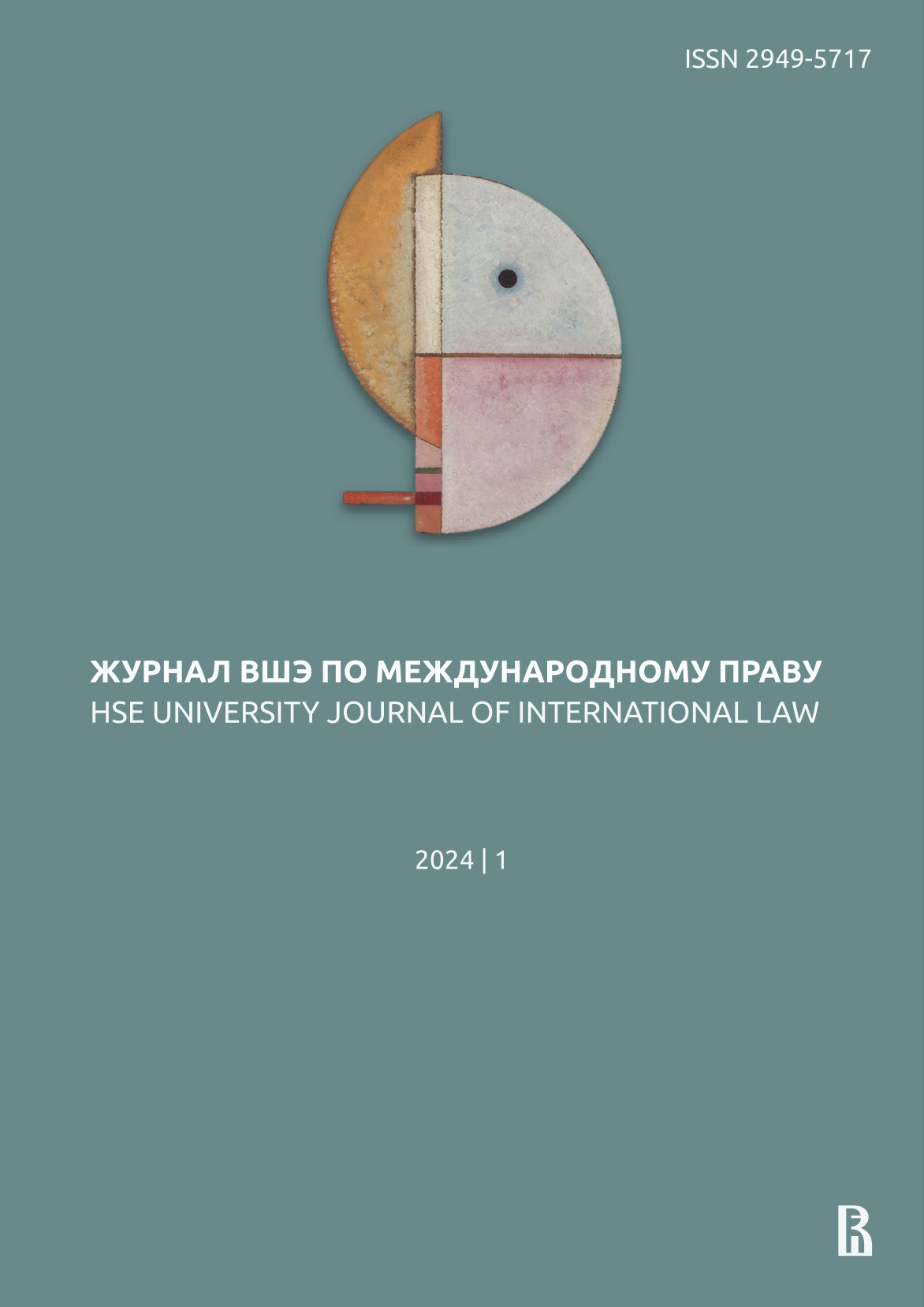A Conceptual Approach to the Legality Underpinning the Ownership of Islands and the Basic Procedures of Maritime Boundary Delimitation of Islands in an Inter-State Context
Abstract
The islands’ legal status, i.e. their territorial sovereignty and ownership in States’ position, is highly valued since it ensures their jurisdictional rights, e.g., access to the islands’ resources, within, to the vicinity, and beyond. Moreover, their significance would be related to navigational plus security reasons affecting the parent State. However, once determined, parties address their jurisdictional rights based on the outcome of the islands’ boundaries. The entitlement of maritime zones concerning islands has become problematic due to their unique features, including geographical and geomorphological conditions, their historical debates, the economic, cultural, political, and social factors that contribute to the sovereignty’s judgement process. Naturally, the path leads to disagreements, controversies, and disputes among States, impacting peace and security worldwide. In case of a dispute, the common practice would be the peaceful settlement of international disputes, the methods outlined in article 33 of the Charter of the United Nations. The international regime of islands is inherently interdisciplinary, and the underpinned interrelated disciplines are sensible by a concise review of each case. Consequently, this paper provides arguments regarding the sovereignty of islands. It analyses the legal reasons for non-tropical territorial sovereignty and ownership with a brief approach to the three cases of international law of the sea (hereinafter — ILoS). These cases are the Abu Musa Island in the Gulf, where undetermined ownership led to an incomplete boundary agreement between Iran and the United Arab Emirates (hereinafter — UAE) in 1974. Additionally, it covers the Spratly and Paracel Islands in the South China Sea known to be a long-running matter of urgency, and the Falkland Islands, where debates revolve around political inheritance, geographical proximity, international treaties, the principle of territorial integrity, effective occupation, and self-determination. As a result, the first objective of the research would be to conclude the reasons for territorial sovereignty, and the second — to shed light on the basics of maritime boundary delimitation (hereinafter — MBD) in an inter-State context, mainly regarding the status of single islands irrespective of their nature, unless mentioned.
Downloads
References
Al-Nahyan S.-Z.-K. (2013) The Three Islands Mapping the UAE-Iran Dispute. London: Royal United Services Institute for Defence and Security Studies.
Anderson D.-H. (2009) Maritime Delimitation in the Black Sea Case (Romania v. Ukraine). The Law and Practice of International Courts and Tribunals. Vol. 8. DOI: https://doi.org/10.1163/156918509X12537882648345
Beck P.-J. (1988) The Falkland Islands as an International Problem. London; New York: Routledge.
Blake G.-H. (2018) Maritime Boundaries and Ocean Resources, New York: Routledge.
Calvert P. (1983) Sovereignty and the Falklands crisis. International Affairs. Vol. 59. DOI: https://doi.org/10.2307/2618794
Chang T.-K. (1991) China’s Claim of Sovereignty over Spratly and Paracel Islands: A Historical and Legal Perspective. Case Western Reserve Journal of International Law. Vol. 23.
Chehabi H.-E. (1985) Self-Determination, Territorial Integrity, and the Falkland Islands. Political Science Quarterly. Vol. 100. DOI: https://doi.org/10.2307/2150653
Crawford J. (2019) Principles of Public International Law. Oxford: Oxford University Press. DOI: https://doi.org/10.1093/he/9780198737445.001.0001
Hong S.-Y., Van Dyke J.-M. (2009) Maritime Boundary Disputes, Settlement Processes, and the Law of the Sea. In: Schofield C. (ed.) The Trouble with Islands: The Definition and Role of Islands and Rocks in Maritime Boundary Delimitation. Leiden; Boston: Martinus Nijhoff.
Jafari Valdani A. (2015) The Historical and Legal Foundations of Iran’s Sovereignty over Tunb and Abu-Musa Islands. Iranian Review of Foreign Affairs. Vol. 6.
Jayewardene H.-W. (1990) The Regime of Islands in International Law. Dordrecht; Boston; London: Martinus Nijhoff. DOI: https://doi.org/10.1163/9789004479241
Karaman I.-V. (2012) Dispute Resolution in the Law of the Sea. Leiden; Boston: Martinus Nijhoff. DOI: https://doi.org/10.1163/9789004212015
Kastrisios C. (2014) Methods of Maritime Outer Limits Delimitation. Nausivios Chora. Vol. 5.
Loomba A. (2005) Colonialism/Postcolonialism. London; New York: Routledge.
Muś A. (2017) Self-Determination and the Question of Sovereignty over the Falkland Islands/Malvinas. Silesian Journal of Legal Studies. Vol. 9.
Schofield C. (2019) The Regime of Islands Reframed: Developments in the Definition of Islands under the International Law of the Sea. Netherlands: Brill.
Swan Q.-J. (2023) The Black Pacific: Vanuatu, Decolonization, and the Global 1980s. Journal of African American History. Vol. 108. DOI: https://doi.org/10.1086/725826
Tuzo Wilson J. (1965) Evidence from Ocean Islands Suggesting Movement in the Earth. Mathematical and Physical Sciences. Vol. 258. DOI: https://doi.org/10.1098/rsta.1965.0029
United Nations (2000) Handbook on the Delimitation of Maritime Boundaries. New York: United Nations Publication.
Wilson A.-T. (1928) The Persian Gulf. London: Oxford University Press.
This work is licensed under CC BY-NC-ND 4.0


